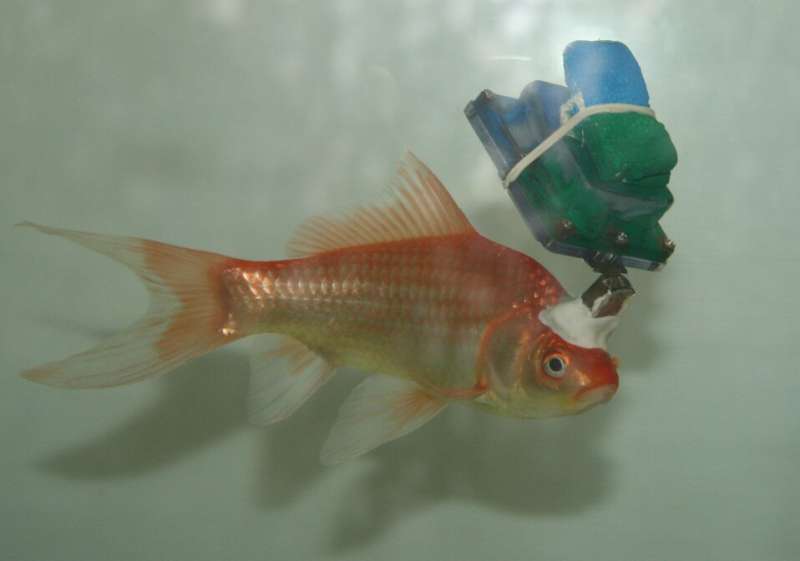April 27, 2023 report
This article has been reviewed according to Science X's editorial process and policies. Editors have highlighted the following attributes while ensuring the content's credibility:
fact-checked
peer-reviewed publication
trusted source
proofread
Fish navigation found to be more 'environment-centric'

In a recent paper, "Boundary Vector Cells in the Goldfish Central Telencephalon Encode Spatial Information," published in PLOS One, researchers at Ben-Gurion University in Israel and the Institut de Biologie de l'École Normale Supérieure in France, studied the cognitive activity of goldfish navigating a fish tank.
Navigation is an essential cognitive skill in animals, and part of how the brain manages the task of moving through a three-dimensional space is by using a virtual spatial representation mapped out with space-encoding neurons. Studies have shown several types of neurons are involved in traversing even a simple space, from recognizing the distance and direction of objects in an environment to tracking the changes in those distances while navigating.
This spatial cognition of geometric relationships utilizes sensory inputs to establish the surroundings, memory guidance for planning and tracking a course over time and vector coding at the single neuron level. There are neuronal head cells dedicated to just tracking the direction the head is turned, place cells that fire when an animal has reached its desired location and the navigation system, in general, is associated with theta frequency oscillations in the hippocampus.
What we know of cognitive navigation comes mostly from mammals and birds, but a recent study in fish found they use a similar system. The discovery of neurons that encode the environment's edges, the fish's head direction, speed, and velocity are similar to that of other animal studies.
No evidence of neuronal activity like place cells was identified in the previous study, and no evidence of rhythmic neural oscillations associated with navigation was found.
To study this cognitive component in fish, the researchers recorded the activity of neurons in the central area of the goldfish brain while the fish were freely navigating. Implants into the goldfish's central telencephalon part of the brain recorded activity, and the data was logged onto a small recording device placed in a waterproof case mounted on the fish's skull.
The study found spatially modulated cells with firing patterns that gradually decreased with the distance of the fish from a boundary in each cell's preferred direction, resembling the boundary vector cells found in the mammalian brain. For other cells the peak firing rate happened when at a short distance from the boundary. These firing patterns could be tuned to boundaries in all directions of space, the bottom of the tank, the surface of the water, the walls of the tank, and even seemed to track the corners of the tank specifically.
The gradual firing pattern of each cell usually spanned a large portion of the experimental environment but did not seem to have a distinctly identifiable "place cell" activity. Sort of like missing the "you are here" icon on a map or GPS, though the overall affect still allowed the fish to navigate just based on the environmental cues.
Many of the cells recorded exhibited beta rhythm oscillations in contrast to the theta oscillations of mammals. This type of spatial representation in fish brains is unique among space-encoding cells in vertebrates studied so far and provides insights into fish spatial cognition.
More information: Lear Cohen et al, Boundary vector cells in the goldfish central telencephalon encode spatial information, PLOS Biology (2023). DOI: 10.1371/journal.pbio.3001747
Journal information: PLoS ONE , PLoS Biology
© 2023 Science X Network



















